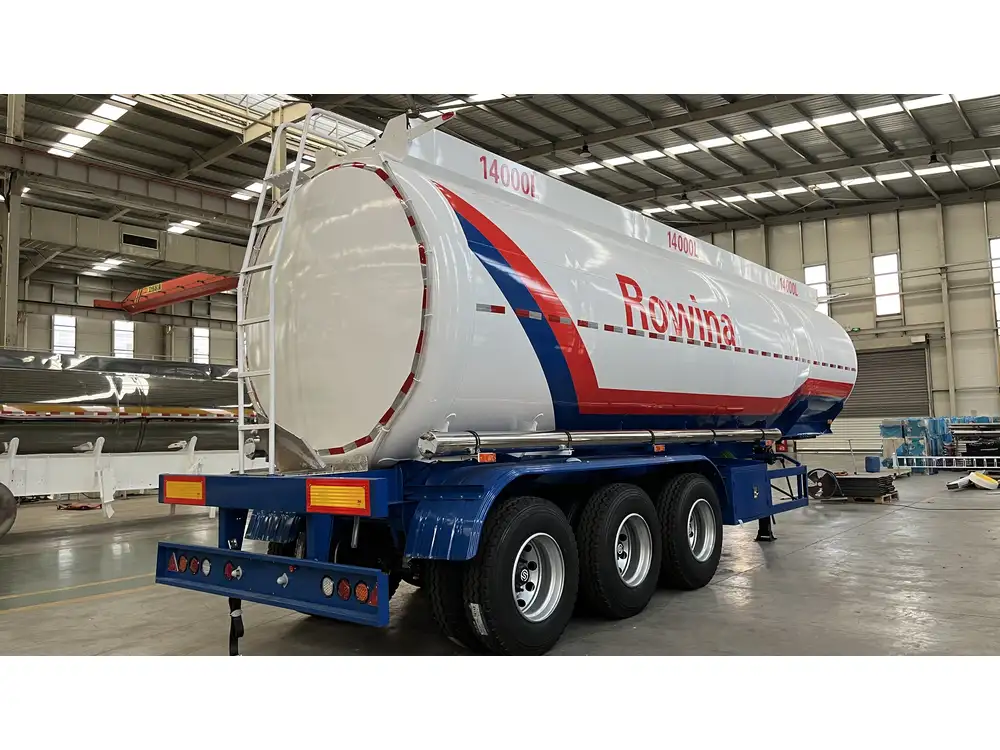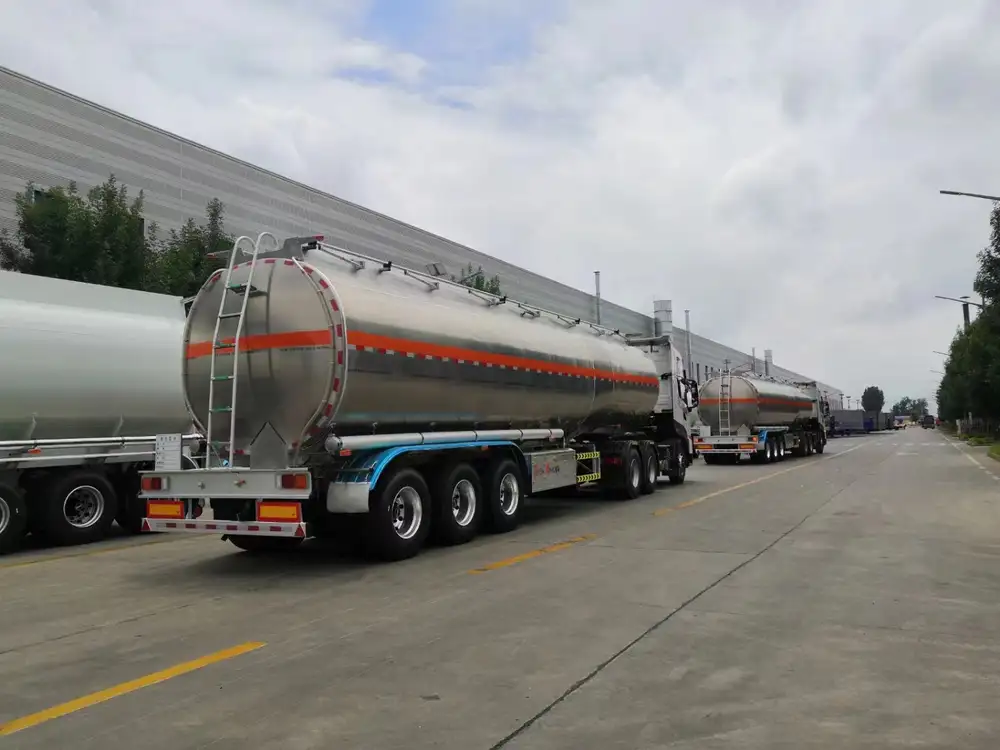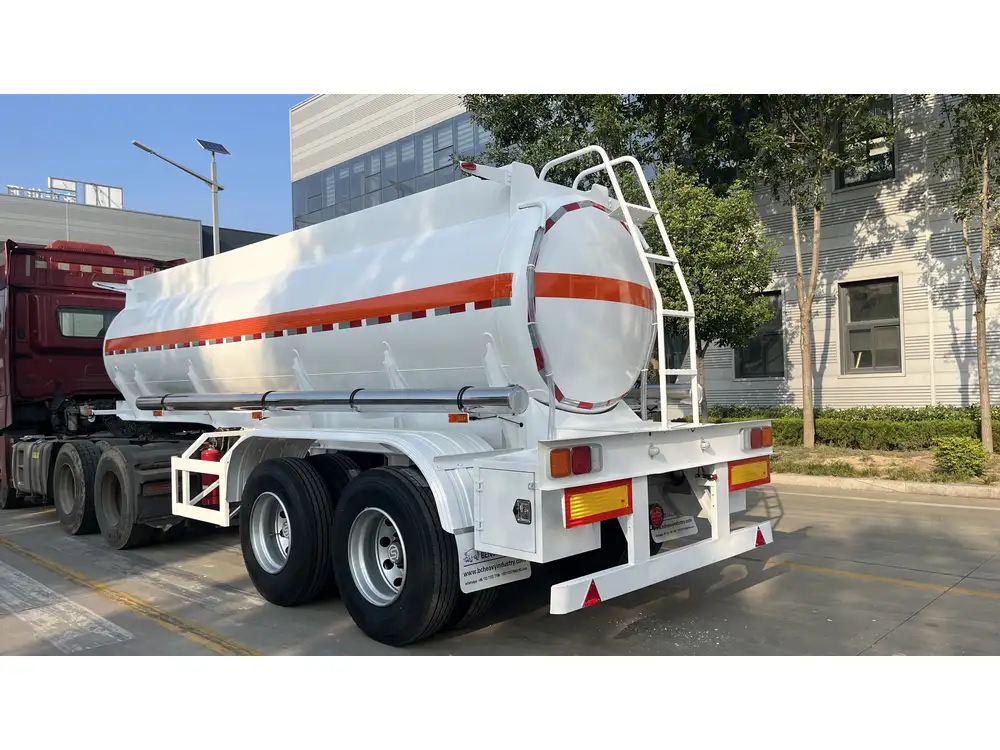When it comes to the transportation and storage of petroleum products, the choice of equipment is critical. For businesses operating in Gambia, finding reliable means of transporting oil can significantly impact operational efficiency and profitability. At CarMax Vehicle, we specialize in manufacturing high-quality semi-trailers, including used oil tankers specifically designed to meet the demands of the oil industry. This comprehensive guide discusses essential insights and considerations for purchasing a used oil tanker in Gambia, ensuring you make a well-informed decision.
Understanding the Market: Oil Transportation in Gambia
An Overview of Gambia’s Oil Industry
Gambia’s oil sector has seen notable developments in recent years, driven by both local and foreign investments. The recent discovery of offshore oil reserves has heightened interest in oil exploration and production. Consequently, businesses are increasingly seeking efficient means of transporting oil to maximize operational productivity.

Importance of Oil Tankers
Oil tankers are a pivotal component of the oil transportation network. Designed to carry liquids in bulk, they facilitate the movement of crude oil, refined petroleum products, and chemicals. Here are a few reasons why investing in a used oil tanker can benefit your business:
| Benefits of Used Oil Tankers | |
|---|---|
| Cost-Effectiveness | Lower upfront costs compared to new tankers. |
| Immediate Availability | Quick access to equipment can meet urgent demand. |
| Proven Performance | Historical data can help assess reliability. |
| Reduced Depreciation | Used tankers generally experience slower depreciation than new ones. |
Factors to Consider When Purchasing a Used Oil Tanker
Acquiring a used oil tanker is not just about the purchase price; several critical considerations can influence the overall value and utility of your investment.
1. Capacity Requirements
The first step is determining your specific capacity needs. Oil tankers come in various sizes, typically measured in cubic meters (m³). Here are examples of typical capacities:
| Tanker Size | Capacity (m³) | Ideal Usage |
|---|---|---|
| Small | 5,000 – 15,000 | Local transportation, smaller operations. |
| Medium | 15,000 – 30,000 | Regional transportation, mid-size operations. |
| Large | 30,000 and above | International transport, large scale operations. |
Choosing the right capacity ensures that you can transport your oil efficiently without incurring excessive costs.

2. Types of Tankers
Not all oil tankers are created equal. Here are the different types you might consider:
- Oil Tankers: Generally designed for the transportation of crude oil.
- Chemical Tankers: Tailored for transporting chemicals with specialized coatings.
- Product Tankers: For the transportation of refined petroleum products like diesel and gasoline.
3. Structural Integrity and Age
The structural condition of the used oil tanker is paramount. Older vessels can have hidden issues that might require costly repairs. Key checkpoints include:
- Hull Condition: Inspect for corrosion, structural integrity, and maintenance history.
- Safety Compliance: Ensure that the vessel meets international safety regulations.
- Tank Condition: Look for signs of leakage or contamination.
4. Regulatory Compliance
Navigating Gambia’s regulatory environment is essential. Ensure that the tanker complies with local and international shipping regulations, including:
- Environmental Standards: Adherence to pollution prevention measures.
Documentation: Verify that all necessary documentation is available, including:
- Ownership records
- Inspection certificates
- Maintenance logs

5. Price and Financing Options
Pricing for used oil tankers can vary significantly based on condition, age, and capacity. Accordingly, establishing a budget is vital. Consider the following financing options:
- Direct Purchase: Suitable for businesses with sufficient capital.
- Leasing: More suitable for companies that expect fluctuating oil transportation needs.
- Financing Solutions: Explore loans from financial institutions specializing in industrial equipment.
Buying Process: How to Acquire a Used Oil Tanker
Navigating the purchasing process can be complicated, but we have simplified it into structured steps.
Step 1: Research and Evaluate
Before making any decisions, conduct thorough research to evaluate the options available in Gambia. Online platforms and local brokers can provide valuable insights into the current market.

Step 2: Inspect the Tanker
Physical inspections are vital before making a commitment. Always utilize experienced technicians for the assessment, focused on:
- Mechanical parts functionality
- Condition of tanks and fittings
- Any signs of wear or necessary repairs
Step 3: Negotiate Pricing
Once you have inspected the tanker and are satisfied with its condition, proceed to negotiate the price. Leverage your research and inspections to justify your stance on pricing.
Step 4: Finalize Documentation
Ensure all necessary paperwork is completed and verified. This includes:
- Sales contract
- Title transfer documents
- Insurance policies

Step 5: Arrange for Transportation
After finalizing the purchase, you will need to arrange for transportation to your premises or operational site. Discuss logistics with the seller or utilize professional transport services.
Maintenance and Operation of Used Oil Tankers
After acquiring a used oil tanker, maintenance and effective operation become paramount for maximizing your investment.
Regular Maintenance Schedules
Creating a regular maintenance plan can prolong the lifespan of your tanker. Key maintenance tasks include:
- Structural Inspections: Regular checks on hull integrity and seals.
- Cleaning Tanks: To prevent contamination and prolong rubber linings.
- Mechanical Inspections: Engine checks, tire pressure, and braking systems should be routinely performed.

Training for Operators
Adequate training for operators is crucial for ensuring both safety and efficiency. Tailored courses on:
- Tank management
- Emergency response protocols
- Handling hazardous materials should be mandated.
Conclusion
Investing in a used oil tanker for sale in Gambia can revolutionize your oil transportation process, leading to reduced costs and improved efficiency. By considering capacity requirements, structural integrity, compliance with regulations, and establishing a rigorous maintenance schedule post-purchase, we can help facilitate a successful integration of this critical equipment into your operations. At CarMax Vehicle, we manufacture high-quality semi-trailers suitable for diverse needs, providing reliable solutions for the oil industry.
FAQs
1. How can I determine the right size oil tanker for my needs?
Assess your typical transportation volumes and consult experts for tailored recommendations.
2. Are there financing options available for buying used oil tankers?
Yes, various financing solutions can suit different budgets, including leasing and loan options.
3. What regulatory standards should my oil tanker meet?
Ensure compliance with local environmental standards and international shipping regulations for safety and operational efficiency.
4. How often should I maintain my used oil tanker?
Regular maintenance, at least quarterly, is recommended alongside safety and operational inspections before and after transport missions.













Reviews
There are no reviews yet.